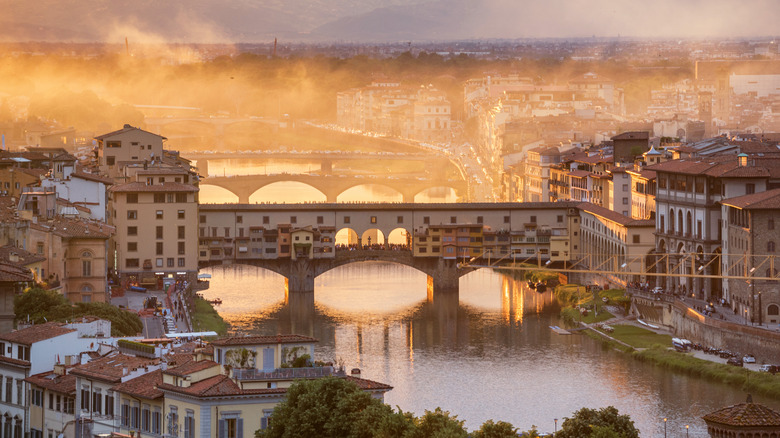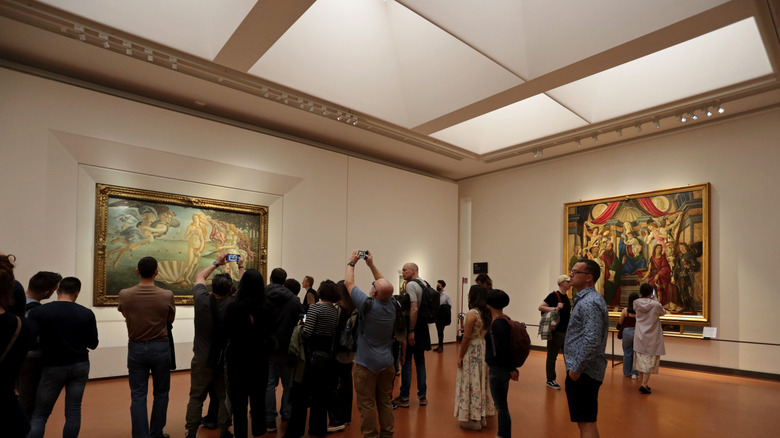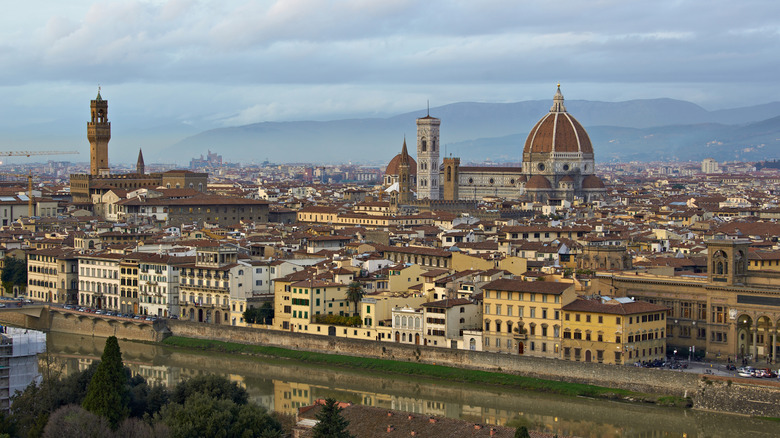Rick Steves Says An Idyllic Italian City Full Of Art And Architecture Is Europe's 'Cultural Capital'
If you're looking to explore the magic of Renaissance Europe, your first port of call is undoubtedly Italy, the birthplace of the greatest minds of the period, such as Leonardo da Vinci and Michelangelo. According to travel expert Rick Steves, the best place to connect with this historical period and European tradition is the beautiful city of Florence. On his website, the travel enthusiast even deems the Italian city "The Cultural Capital of Europe."
If you are thinking of visiting Italy, you probably imagine yourself in Rome, exploring famous attractions such as the Sistine Chapel and the Trevi Fountain. Indeed, for many, Rome is a great place to start off an Italian vacation, but the capital is often exceptionally crowded, meaning you want to get out of the bustling city and explore more of what Italy has to offer. Thankfully, Florence, which is just a short two-hour train journey away, represents a more discerning choice for travelers looking for other must-see cultural attractions and some of the most jaw-dropping art Italy has to offer.
Why Rick Steves calls Florence Europe's 'Cultural Capital'
Florence is most associated with the Renaissance period, as the movement began in the Italian city. As Steves notes, the city's rich history is evident in the wide range of cultural treasures on offer. Marked by the patronage of historic Florentine families, such as the Medicis, the city saw an explosion of art and architecture in the 15th century. It houses some of the most famous works of the time, including Sandro Botticelli's "Birth of Venus," which hangs in the Uffizi Gallery among countless other masterpieces. There is also the dome of Florence's Cathedral of Santa Maria del Fiore, designed by visionary architect Filippo Brunelleschi. Steves is especially fond of Michelangelo's iconic sculpture, "David," which today is found in the Galleria Dell'Accademia di Firenze. He writes, "The statue was an apt symbol, inspiring Florentines to tackle their Goliaths."
There is even more history to explore beyond the beaten path. The Stibbert Museum is one of Florence's most unusual and is a secret beauty to escape crowds. This charming site includes artifacts from private collector Frederick Stibbert. It features a range of art pieces, as well as beautiful armor and weaponry dating back to the 14th century, all of which is housed in Stibbert's historic villa and immaculately kept gardens.
Florence offers plenty of modern culture, too
Don't head to this city thinking that Florence is nothing more than a museum of the past. In recent decades, the city has proven to be a continuing hive of cultural activity. For example, Polimoda is a fashion institute that attracts students from across the world and is home to innovative exhibitions exploring the art and history of the industry. The city is also blessed with a number of outstanding music venues, including the Jazz Club Firenze and the esteemed Nof bar, a classy venue for live acts of all kinds.
Steves points out that the Oltrarno neighborhood is home to artisans, artists, and craftmakers selling their wares. It is well worth a visit if you're looking for authentic Florentine souvenirs. The area is also more widely renowned for its nightlife, restaurant scene, and easy-going vibe.
Steves also mentions Florence's noticeable "wasp" problem, as this is a nickname for Vespa scooters, which have been popular with locals for generations. Though you may spend a good deal of your time in the city dodging their paths, Vespa tours of Florence have proven very popular with travelers, offering a fun and easy way to explore the city and its history.


